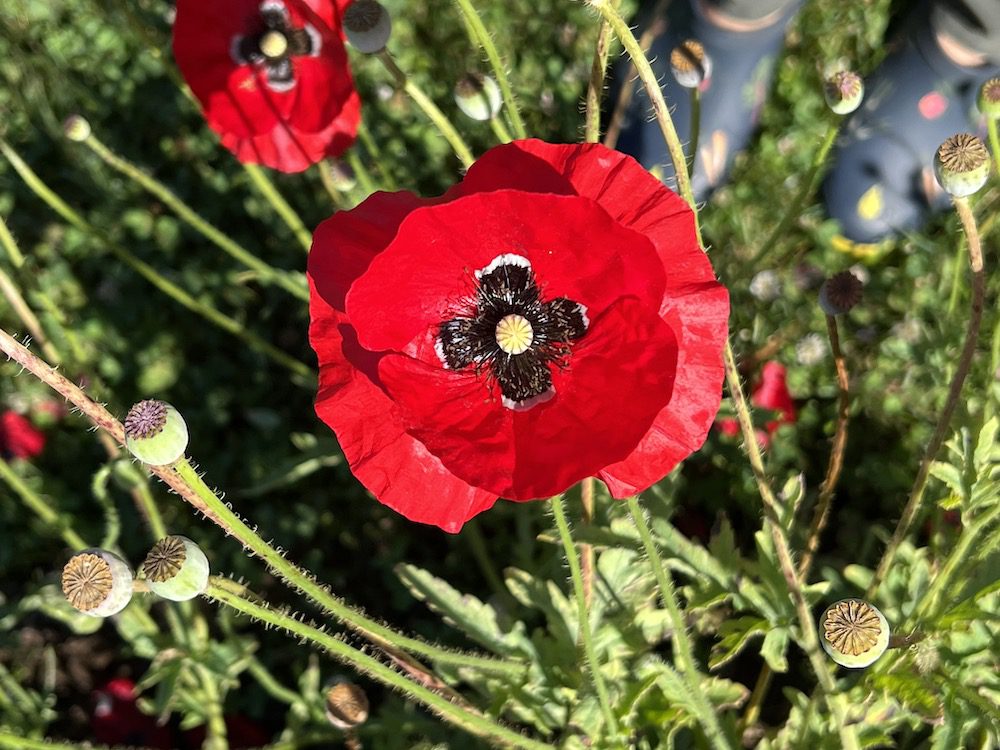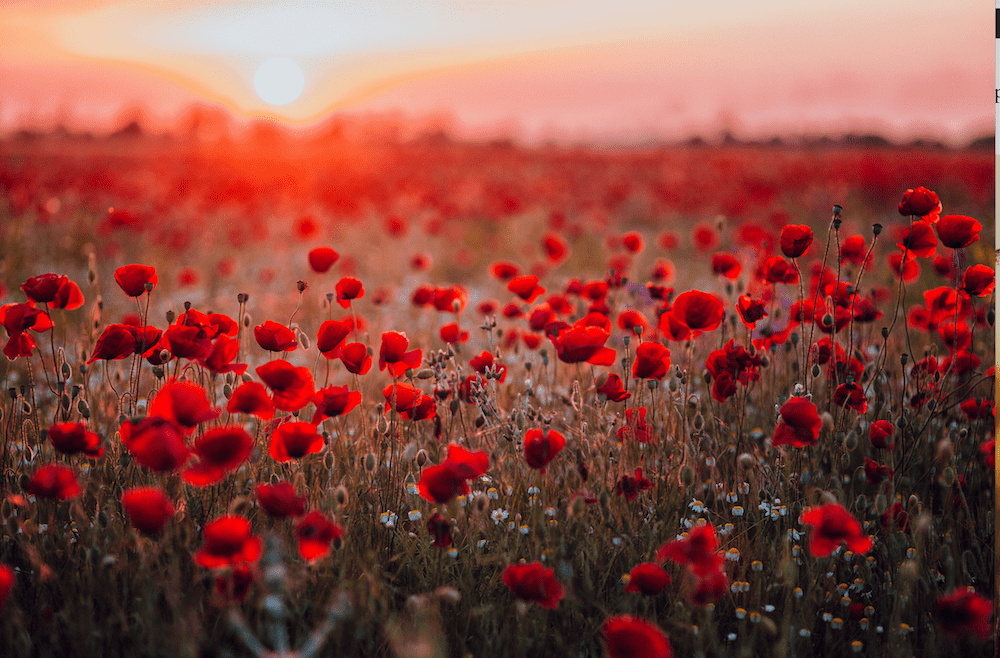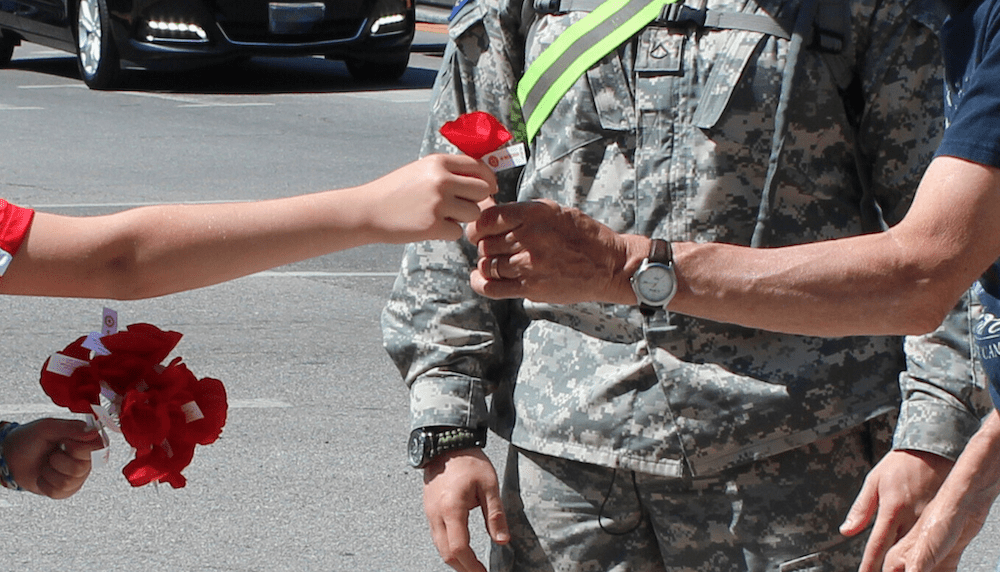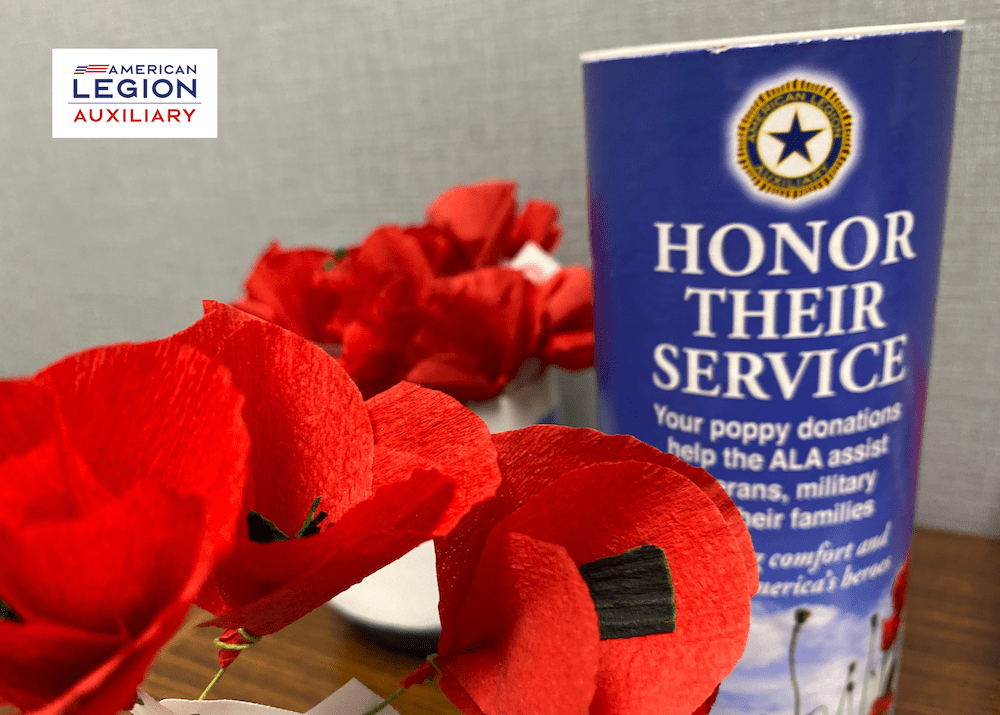National Poppy Day – Why the Flower Matters
By Jill Brooke

It’s time to reflect on how the poppy is used to honor the sacrifices made by soldiers while protecting our freedoms. Poppies are often presented on graves in the form of wreaths since their circular shape represents eternity, continuity, and the circle of life.
All through Veteran’s Day and Memorial Day weekend, you will likely see volunteers from the American Legion Auxiliary in your town distributing poppy pins as well.
These pins are often handmade by veterans as part of their therapeutic rehabilitation and distributed across the country in exchange for donations that “benefit veterans, service members, and their families in local communities,” says American Legion Auxiliary spokesperson Jennifer Donovan. The donations are not mandatory but a nice thing to do. It is also a nice tradition to share and participate in with your children.
In the 1920s, the American Legion adopted the poppy as its memorial flower and then brought the concept to Congress to designate the Friday before Memorial Day as National Poppy Day.

The tradition started following World War 1 after poppies bloomed on the battlefields in France and Belgium.
“One reason the corn poppies bloomed so riotously was that the bombs both disturbed the soil and released a lot of nitrogen – both factors that poppies love,” notes horticultural expert Julie Sakellariadis. But the science wasn’t known at that time. Instead, people projected other meanings to this occurrence then and before.
Going back to the destruction of the Napoleonic wars of the early 19th century, red poppies also grew around the bodies of the fallen soldiers on what seemed like a barren land. It was a majestic sight that triggered many emotions. Poppies then started to become an image of hope for peace with the unspoken message that sacrifice was noble for the greater good.
Some have thought the flowers were popularized because of their blood-red color signifying bloodshed as a result of someone’s sacrifice to their country. Another interpretation from classical mythology is that the scarlet flower with its ebony interior – black is also a color of death – signifies the promise of resurrection after death.
Since ancient times, poppies have long been used as a symbol of sleep, peace, and death. In both Greek and Roman myths, poppies were used as offerings to the dead. Poppies were also used as emblems on tombstones to symbolize eternal sleep. After all, opium is extracted from poppies and was often used as a sedative, fortifying that interpretation.

However, most history buffs credit Canadian surgeon and Lieutenant John McCrae for popularizing its use for military remembrance ceremonies. He wrote the poem, “In Flanders Fields” during World War I at a place where poppies were plentiful and grew around gravesites.
“In Flanders fields, the poppies blow
Between the crosses, row on row,
That mark our place, and in the sky”
McCrae was inspired to write this poem on May 3, 1915, after presiding over the funeral of a friend and fellow soldier Lieutenant Alexis Helmer. Legend has it that he didn’t even like his poem and discarded it. But his fellow soldiers, moved by the sentiments, retrieved the poem and sent it to family and friends.
Like the flower, McCrae’s poem, “In Flanders Fields,” also spread and then pollinated in magazines and the public consciousness across continents.

Among those who were moved by the poem was Moina Michael, an American professor in Georgia. She subsequently wrote her own poem in 1918 titled, “We Shall Keep the Faith.” Her enthusiasm for the poppy as a symbol of remembrance earned her the nickname, “The Poppy Lady.” In fact, the tireless Michael campaigned to make the poppy the internationally recognized symbol of remembrance and welfare for war veterans.
One of her strategies was to raise funds for returning veterans of World War I by selling poppies. So while McCrae is credited for the poem, no one can create a movement alone. Moina Michael is also credited as the founder of the Memorial Poppy in the United States.
Turns out that the poem and poppy are prominent Remembrance Day symbols throughout the Commonwealth of Nations, particularly in Canada, where “In Flanders Fields” is one of the nation’s best-known literary works. It is also very popular in the United States and cited on both Veterans Day in November and Memorial Day in May.
Just recently in 2014, the Ukrainians have also started wearing the poppy as a symbol of the victory over Nazism and as a commemoration of the victims of World War II.
In November 2021, Prince Harry presented the inaugural Intrepid Valor Awards to five service members, veterans and military families who are living with the invisible wounds of war wearing a red poppy on his military jacket. His wife Meghan Markle wore a red poppy on her Carolina Herrara gown, and earlier on a black sweater for a business meeting. The Intrepid gala raised money for Intrepid’s educational program for students and programs to support veterans.
Although it is now firmly rooted in symbolism, perhaps find your own ways to use the flower this weekend to spread this noble message. Buy a poppy from a veteran. Draw one with your kids. Use it as a way to tell stories to your friends and family. Wear a poppy accessory in some way.
After all, the flower will forever be associated with remembrance and the unity of what loss means and where hope can grow.

Jill Brooke is a former CNN correspondent, Post columnist and editor-in-chief of Avenue and Travel Savvy magazine. She is an author and the editorial director of FPD and a contributor to Florists Review magazine. She also won the 2023 AIFD (American Institute of Floral Designers) Merit Award for showing how flowers impact history, news and culture
